Paramount Action Zone

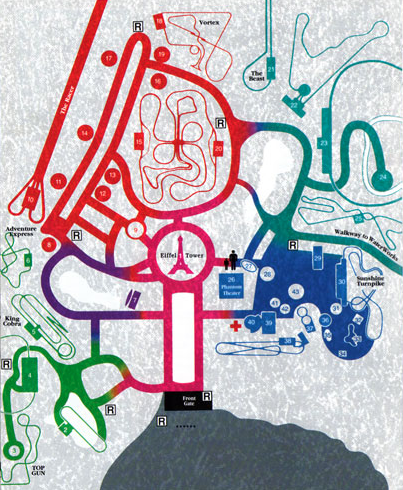
When the first Paramount-branded attraction opened at Kings Island in 1993, it was a harbinger of things to come. A suspended, swinging family coaster (not unlike the Lost Legend: Big Bad Wolf), TOP GUN: The Jet Coaster was an exhilerating thrill ride with light theming meant to recall the 1987 Tom Cruise action classic. The coaster dove through the steep forested ravines west of the park’s main pathways. It was also wildly out of place.
Technically, TOP GUN was located in the Wild Animal Habitat themed land (otherwise anchored by an air-conditioned monorail safari through real zoological exhibits). But naturally, Paramount had little interest in running an animal park. The Safari was gone by 1994, with the area renamed Adventure Village.
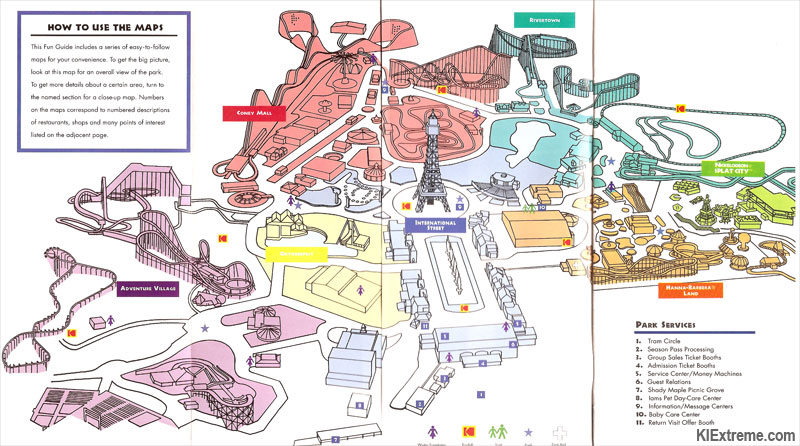
And with (Six Flags) Kentucky Kingdom on the rise, it was time for Paramount to get serious about their Cincinnati park… and time to flex their filmmaking muscles and leverage some of their studio-centric catalogue. To launch a preemptive strike against Kentucky Kingdom, Adventure Village would need to go extinct.
In 1999, the land was transformed into the Paramount Action Zone. Thatch-roofed gift shops and restaurants transformed into saturated, high-energy studio spots offering Hollywood gifts and snacks for the stunt crew (that’s us). A central plaza dominated by a studio watertower was ringed with Paramount movie posters as film soundtracks filled the air.

But most importantly, the new Paramount Action Zone introduced two new thrill rides. DROP ZONE: Stunt Tower (the world’s tallest Intamin Gyro-drop, casting 40 passengers at a time as stunt extras, seated in a ring that revolves to the top of a 315 foot tower before plummeting)….
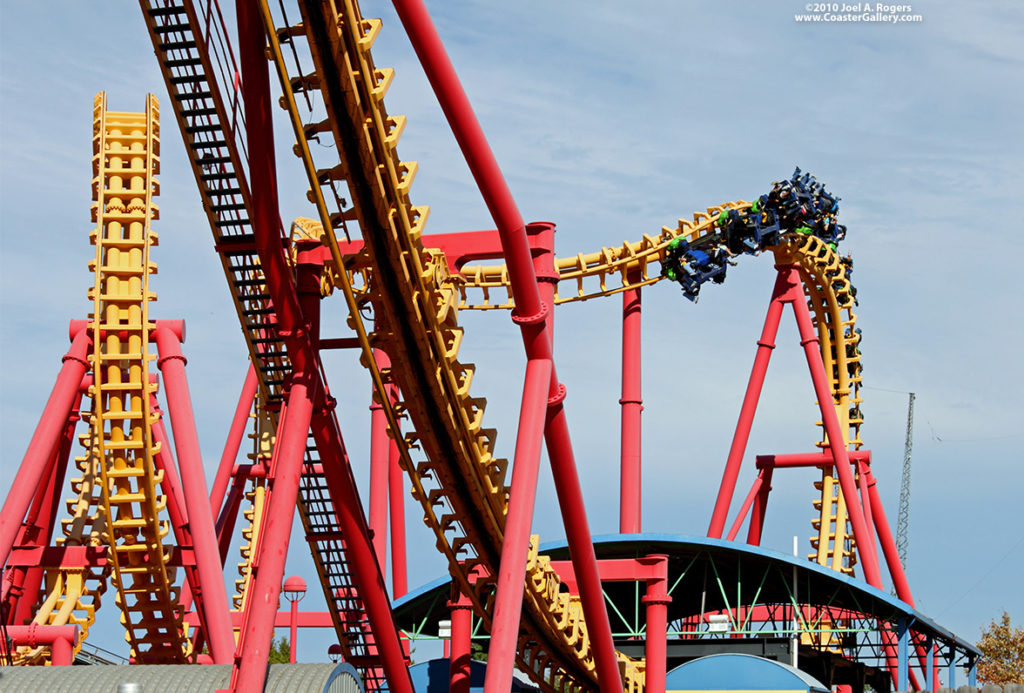
…and FACE/OFF (a gold-and-crimson inverted Vekoma Boomerang where riders face each other in forward-backward-forward-backward seating).
But Drop Zone and FACE/OFF alone would not win Paramount’s Kings Island victory against Six Flags’ own plans for the region. If Kings Island were put a stop to Kentucky Kingdom’s growth even before it started, it needed to go big… Very big. Perhaps appropriate for Paramount’s movie studio styling, their plan was wildly cinematic…
The Sequel
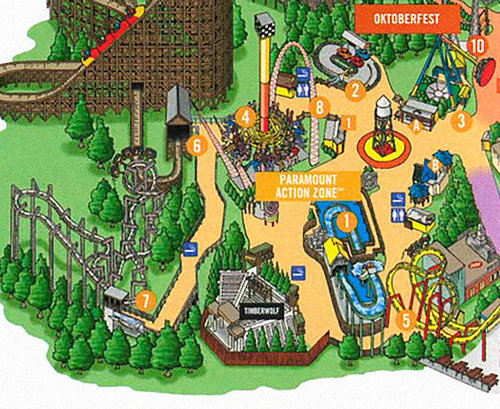
There’s nothing more natural for a movie studio than a sequel. And as anyone knows, the best way to make a sequel is to make it bigger, louder, and (most importantly) more expensive than the original. That’s why, in 1999, a massive wooden crate appeared inside Paramount’s Kings Island. As guests walked by, they’d hear deep snarling and clawing from within the box, and it would violently shake, tethered to the ground only by massive, rattling metal chains.
On May 11, 1999 – twenty years after the opening of The Beast, media and guests gathered beneath the towering structure of the wooden creature to announce a sequel unlike any other on Earth. The mysterious sounds inside of the wooden crate grew louder and angrier as the announcement continued until its name was finally unveiled.
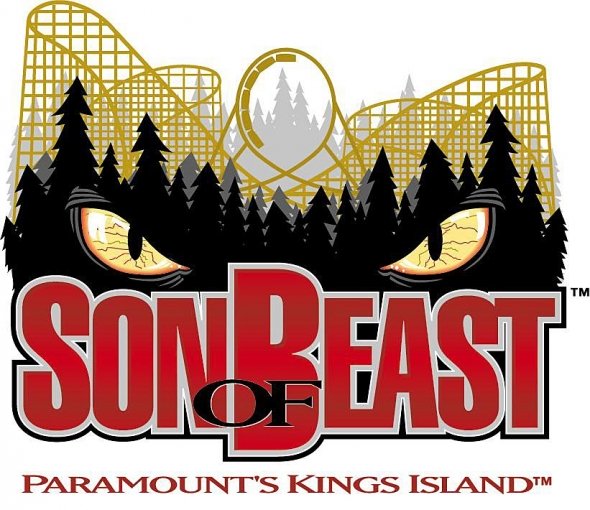
In 2000, Paramount Action Zone would be home to the biggest, loudest, greatest sequel of all time: SON OF BEAST.
At more than $20 million, Son of Beast would be the largest investment ever at Paramount’s Kings Island. It would also be the tallest and fastest wooden roller coaster ever, the second longest (leaving the length record to its father), and the first wooden “hypercoaster” breaking the 200-foot height barrier. The addition of Son of Beast would also give Kings Island more wooden roller coaster track than any park on Earth (22,619 feet – more than 4 miles).
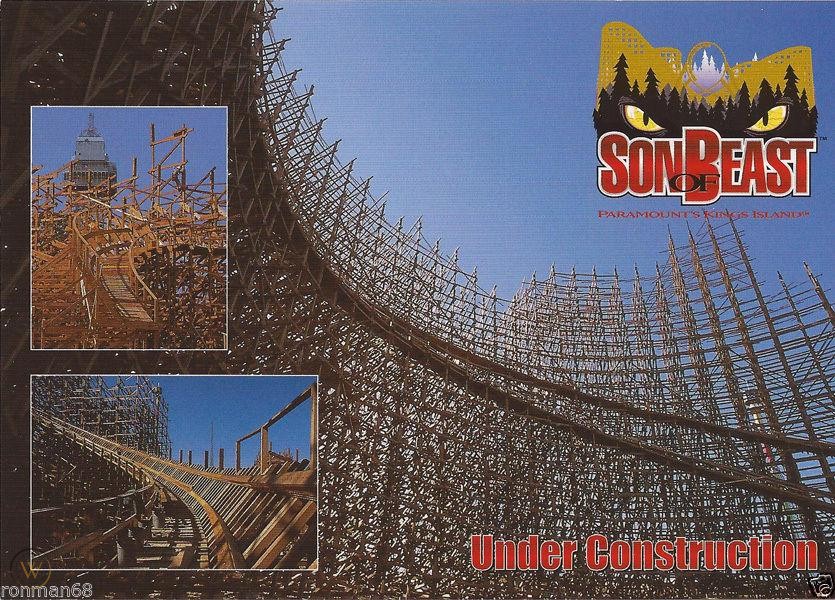
But the most unimaginable feature of Son of Beast wasn’t its record-breaking height, speed, drop, or title. Rather, it was something few could’ve imagined: Son of Beast would be the only looping wooden roller coaster on Earth.
The reveal of the remarkable ride model at the announcement earned disbelieving gasps and applause from the gathered crowd who couldn’t have imagined that a decade later, the largest and most ambitious addition ever at Kings Island would be reduced to a pile of shattered lumber.
Building a new Beast

Son of Beast was designed by famed roller coaster designer Werner Stengel, a sort of thrill ride Renaissance man who founded Ingenieurbüro Stengel GmbH, a German engineering firm.
Stengel’s work early on led to the development of the modern loop (a clothoid, or reversed teardrop shape compared to earlier, perfectly circular loops) and the idea of orienting track banking around a human rider’s heartline for comfort. Stengel was instrumental in the design of many definitive thrill rides today, including Millennium Force, Top Thrill Dragster, El Toro, California Screamin’ and a staggering 590 more, including his celebrated 500th design: Cedar Point’s Maverick.
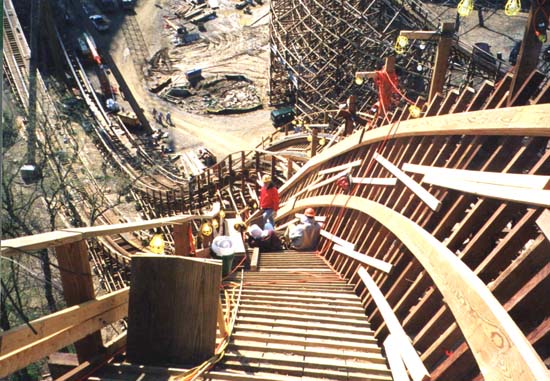
When it came time to build the behemoth Son of Beast, Paramount Parks turned to the Roller Coaster Corporation of America (RCCA), perhaps best well known for Six Flags Fiesta Texas’ Rattler (1992). RCCA got to work constructing the ride, comprised of 2.5 million board feet of wood. Southern yellow pine made up the extensive and complex support structure with the wooden track piles made of Douglas fir. Over 2,400 concrete footers were dug 11 feet into the ground. Altogether, the ride used a staggering 225,000 21-inch steel bolts.
But from the start, a few rough areas signaled that Son of Beast would have an even worse attitude than its father…
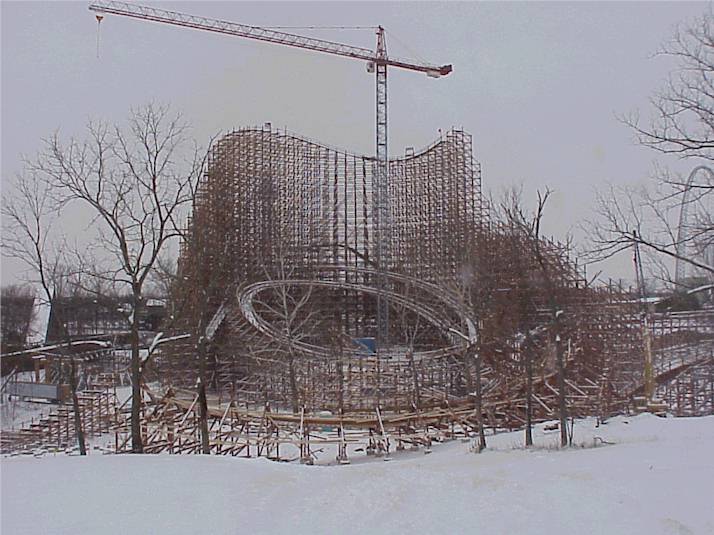
On January 11, 2000 – well into the ride’s construction, a 50 by 100 foot section of wooden supports collapsed as particularly strong gusts of wind ravaged the unfinished ride. The track section had only been held up by temporary supports, and Paramount’s Kings Island officials announced that the ride’s April opening wouldn’t be delayed by the temporary setback.
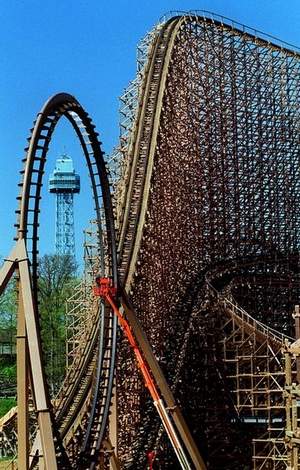
As opening date neared, they changed their tune. Partway through construction, Paramount Parks Inc. fired RCCA entirely and set out to finish constructing the ride by themselves, in house.
In November 2000 – after the ride’s first season – Paramount sued RCCA [as Roller Coaster Company of Ohio – the contracted designer and constructor], Wooden Structures Inc. [the lead structural engineering firm] and even Universal Forest Products of Hamilton [who provided the lumber] alleging that the very design of Son of Beast contained insufficient support structures and other defects that Paramount was then required to correct – more on that in a bit.
Son of Beast opened later than expected: May 26, 2000. Like most highly anticipated sequels, guests were ecstatic about the record-shattering ride, even if they portrayed an air of skepticism. Could Son of Beast really be a worthy follow-up to one of the greatest wooden roller coasters ever? Short answer: it depends who you ask… Ready to take a ride on this this cinematic offspring? Hold on tight…


